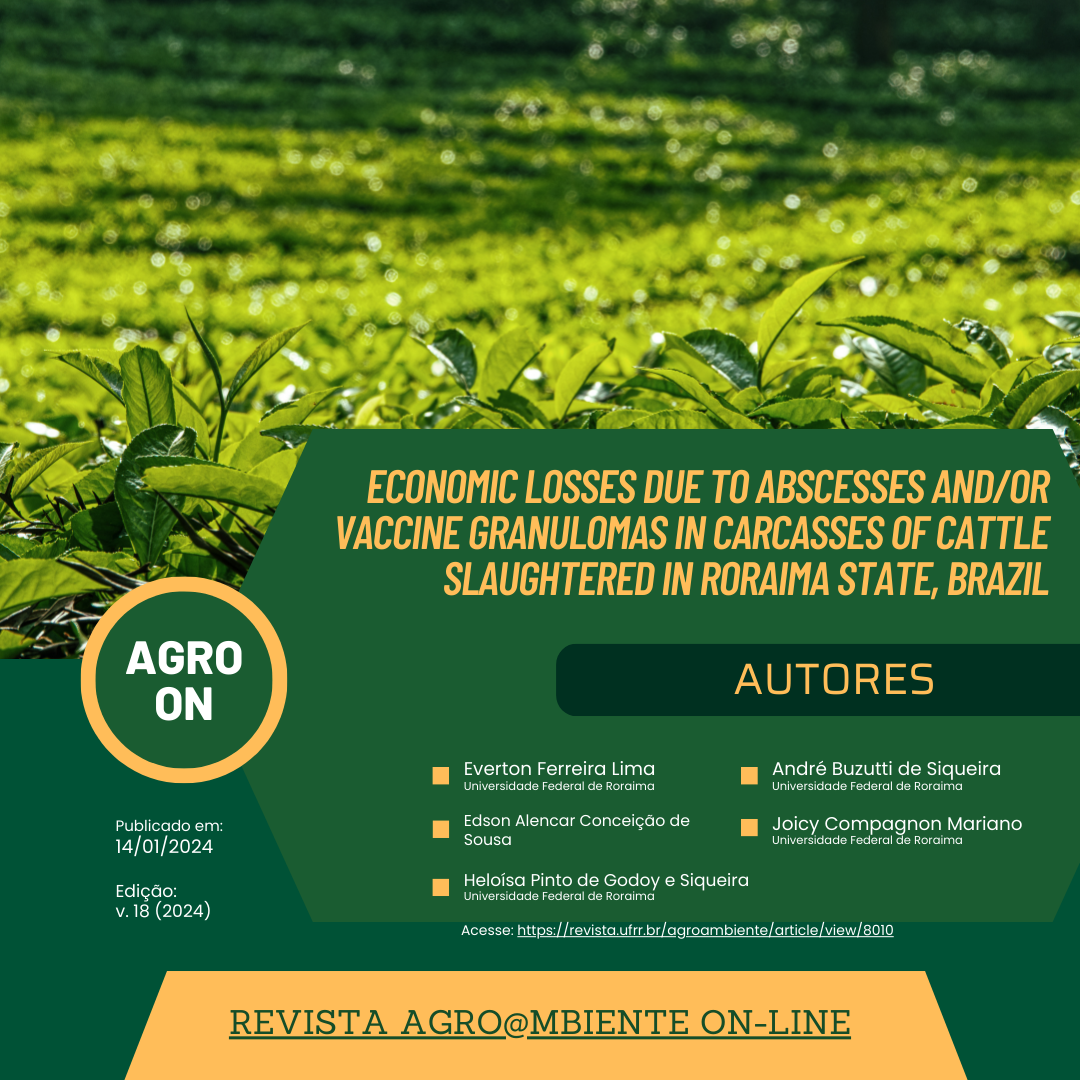Economic losses due to abscesses and/or vaccine granulomas in carcasses of cattle slaughtered in Roraima state, Brazil
DOI:
https://doi.org/10.18227/1982-8470ragro.v18i00.8010Keywords:
Beef cattle farming. Carcasses. Fridge. Lesion. Financial losses.Abstract
Beef production has been growing in Roraima state, Brazil, in recent years. As a result, poor sanitary management and final product quality have caused economic losses due to inappropriate vaccine use. Thus, the present study aimed at evaluating the economic losses caused by vaccine reactions due to abscesses and/or granulomas in cattle carcasses from slaughterhouses under veterinary inspection in Roraima. The study was carried out from August 2017 to July 2018, in a slaughterhouse, evaluating cattle carcass injuries. A total of 277 carcasses with vaccine reactions were identified, 57.03% with granulomatous lesions and 42.97% abscessive lesions, representing an economic loss of R$ 2,105.20. In regard to lesion location, there was a predominance on the side of the neck (91.34%). There was a statistical difference between the type of injury and carcass weight (P<0.05). The municipalities of Cantá, Caracaraí, Iracema and Rorainópolis showed a statistical difference in granuloma frequency for abscesses, demonstrating probable adequate vaccination management. The information obtained can be used to alert sanitary defense and public health services, through disease control programs for the state’s cattle herd. It is expected that these programs could improve final product quality, thereby reducing the economic losses of producers.

Downloads
Published
Issue
Section
License
Copyright (c) 2024 AGRO@MBIENTE ON-LINE JOURNALRAGR

This work is licensed under a Creative Commons Attribution-NonCommercial-NoDerivatives 4.0 International License.
I declare on my behalf and on behalf of the other authors that I represent in the act of submitting this article, to REVISTA AGRO@MBIENTE ON-LINE that: • 1. The content of the article is the result of original data and not published or submitted to other journals . • 2. In addition to the lead author, all co-authors participated sufficiently in the work to make public their respective responsibilities for the content. • 3. In case of acceptance of the article, the authors agree that the copyright referring to it will become the exclusive property of Revista Agro@mbiente On-line, any reproduction, total or partial, in any other part or means of dissemination is prohibited, printed or electronic, without the prior and necessary authorization being requested and, if obtained, acknowledgments must be made to the Revista Agro@mbiente On-line of the Centro de Ciências Agrárias/UFRR.


